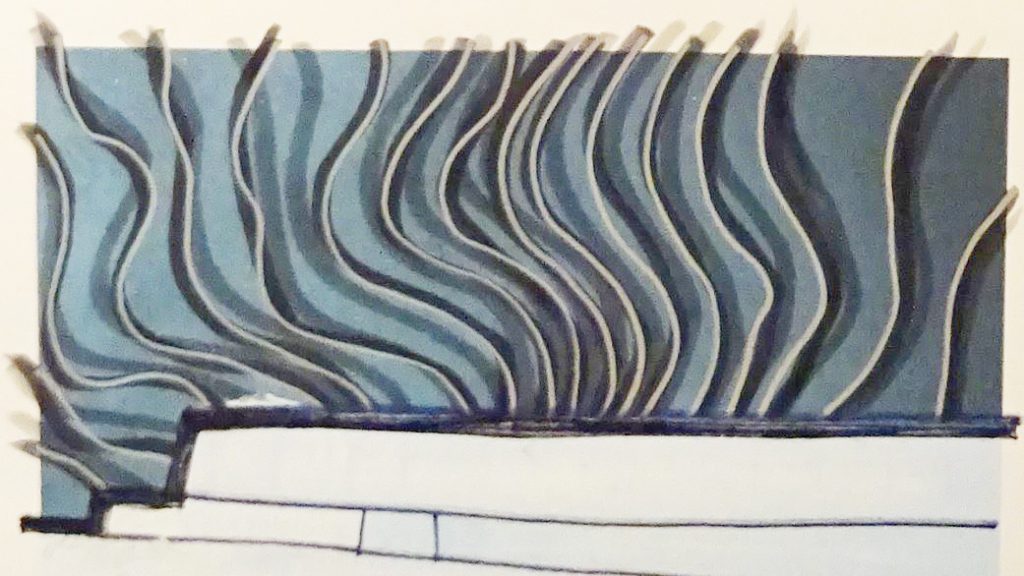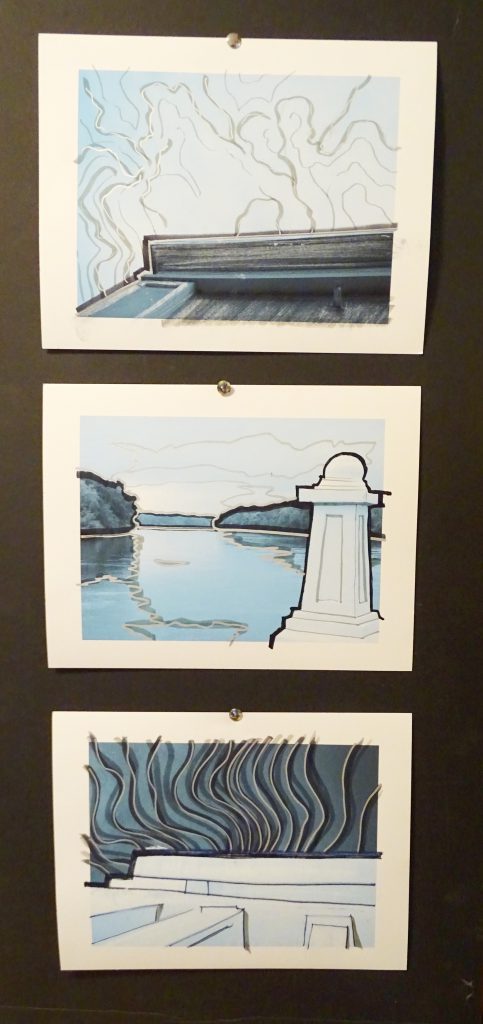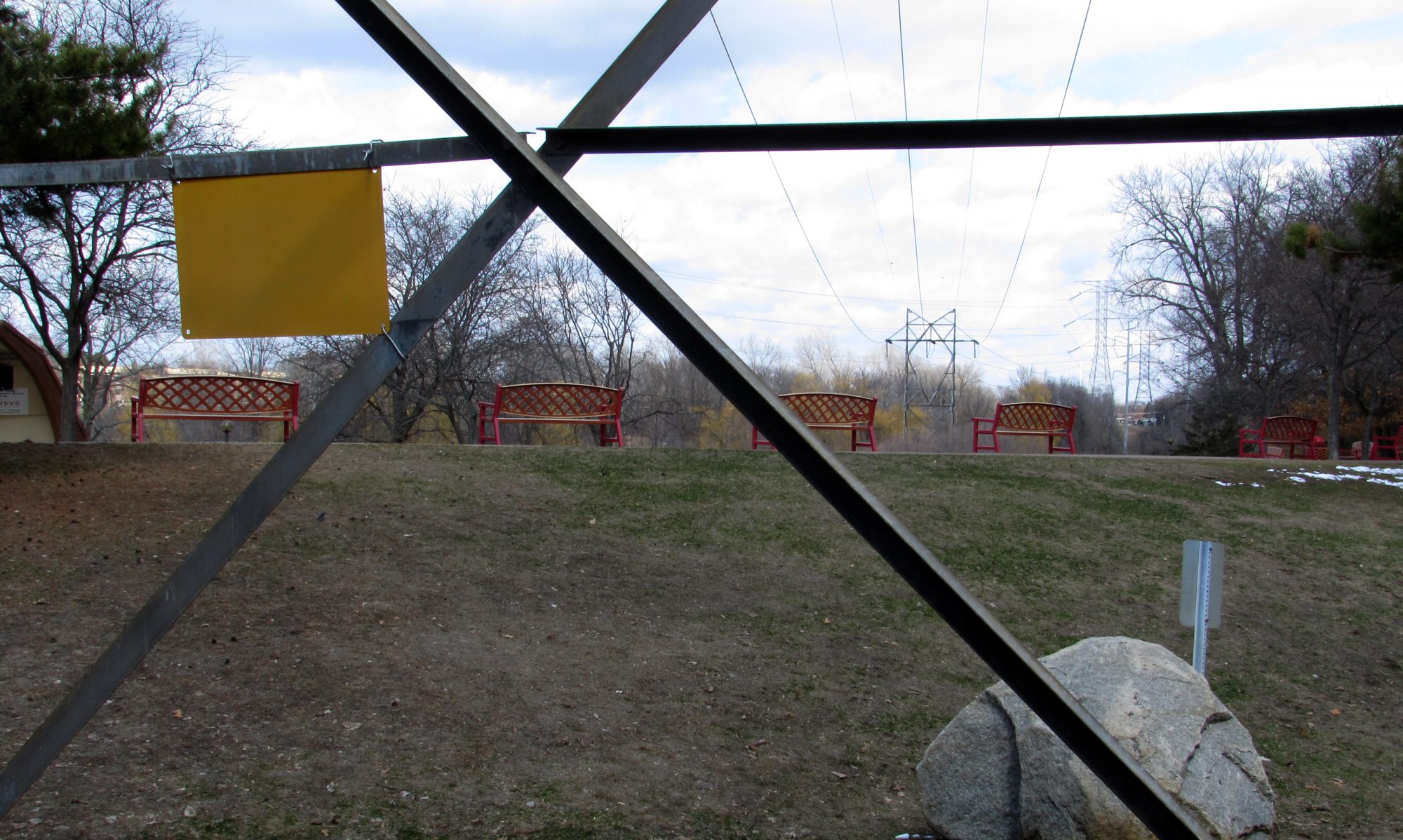
Where to begin?
Christopher Vogler, in his book, The Writer’s Journey – extracts the principles of Joseph Campbell’s Hero’s Journey to provide guidance in writing successful narratives. The Hero’s Journey is a narrative pattern found across time and cultures that reveals the most common elements in how humans tell stories–whether in movies or myths. Vogler suggests that without enough pieces of this narrative pattern, that the story won’t quite come together. For example, an adventure story benefits from establishing the place from which the adventure departs. This helps set up the contrast between the familiar and the unfamiliar world of exploration.
What does this have to do with art? Is there a journey of experiencing an artwork that benefits from establishing a starting place, or point of reference? A place from which the artist-guide takes the hero-viewer on a journey, sending them into a world of new perceptions? Is this what makes art “accessible” to viewers?
Referencing the familiar in the journey of an artwork intrigues me. On the face of it, this is common. For example, in a still life an artist can use painting techniques to turn the mundane or familiar into something new. The process of translating the familiar might take place within the mind of the artist, and the mind of the viewer, unnoticed because representational art itself is so familiar. I’m curious about making this process explicit — to expose and highlight this translation and transition from reality to new perception by starting with elements that imply an accurate representation of reality, such as a photograph or a map, and making visible alterations that highlight the filters and translations we make in perceiving reality all the time, or offer a new filter.
Altered Photo
I’ve been experimenting in approaches to what I call “altered photo” medium. This name is inspired by the artists’ book form of “altered book” that takes an existing book and manipulates it into something new. In altered photo, I like to start with what look like normal “snap shots” — images that look like the familiar form of representational photography that implies a “literal” and accurate view of the world (even if it is a highly selected view). Then I do something to change that view which comments on, or interprets the original view. The process is like an inquiry of perceived reality, asking, What am I seeing? What is this? What if it’s not what it looks like? What if it is more than what it looks like?
In the following example, I started with three views of a place in the landscape– a very special place to me: the St. Paul Regional Water Services Intake building. This is the point at which the Mississippi River gets drawn in to the water treatment sequence of pipes, lakes and treatment plants, and redistributed to homes and businesses, and my own sink. This isn’t the first time I’ve altered these views. A few years ago I used the same views in a triptych called River’s Edge: Downward, Outward, Upward and used white colored pencil to explore the boundaries in the image between the “man-made” and “natural,” which I wrote about here.

For this new triptych experiment, I started with ‘failed’ inkjet prints of these views that were too nice to throw out, but were not what I intended. The printer was low on some toner and they came out with strong blue tones. This seemed to open the door for more abstracted exploration, retaining less of the reference to reality than the first triptych. And the flawed prints made me more open to experimentation. So I grabbed some markers and started playing. The heavy marker borders, started to make the scene more cartoonishly outlined. And the silver Sharpie combined with with gray marker in the water gave the river a texture and depth not found in the prior version where the light white lines laid delicately on the surface of the water. The media itself becomes more self-conscious in this version. There’s a heavier hand, willing to more severely alter reality in this set. The same big idea of how we partition and filter reality drove this triptych, but the media went further, with sand paper used to scratch off some of the toner on the painted concrete surfaces, erasing the prior record of the scene, and replacing it with a new rendering.
Threshold
I wonder how far the photos can be altered before they lose all sense of being a photograph and the record of reality that implies. Do the resulting pictures remember what they were originally? Before they were altered in hue by a printer with low toner? And abstracted into hard-edged objects by markers, and sanded off and re-rendered? Even before that, does the digital image file (the .jpg) remember the temperature and humidity and the sound of birds I felt on that balcony overlooking the river that quenches my thirst? How does the reality carry forward in the image, and then carry forward in the alteration of the image? What is left of the meaning in the original scene?
The Ship of Theseus Paradox, describes the complexity of the boundaries between identities of objects in transition. As a ship’s parts are slowly replaced, what makes it remain the same ship, even once all the parts are replaced? Or is it the same ship? Altered photo takes the journey toward this paradox, replacing familiar and original elements of a photograph step by step, toward the same view represented by different materials. This is also like the water intake building pictured in this triptych, which sends water on its Theseus-like journey through the water treatment process, gradually removing pollutants and changing properties to turn the river into tap water. Or is it still the river?


One Reply to “Boundaries and Journeys of Perception”
Comments are closed.